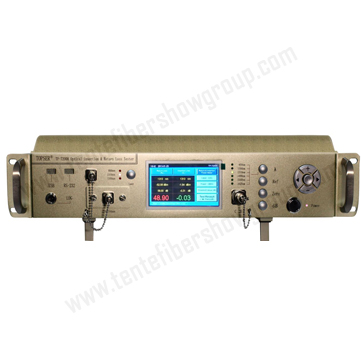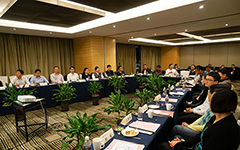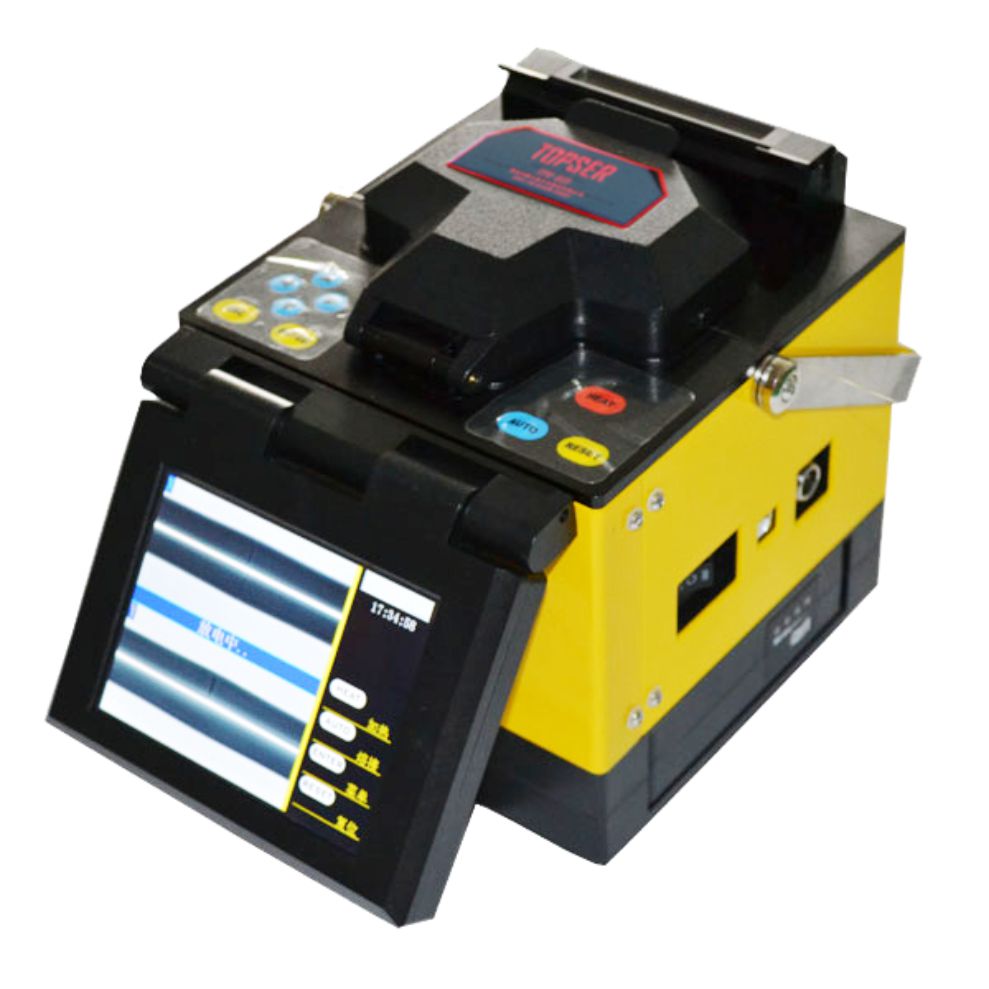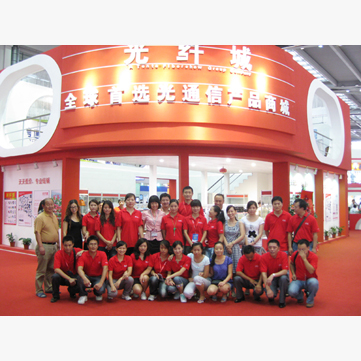
-
Company Profile
Committed to the world class optical communication research and development and innovation, creating...
Patchcord Production Line
Fiber & Cable
Access Network & Datacom Solutions
Product News
Tente Fiber Fusion Splicer
Main Features
5 inches high Resolution colorful LCD display, image can be turned according to position.
Average splice time: 10 second
-

- Home
- About Us
- Product Center
- News Center
- Enterprise Culture
- Contact Us
- 中文 | ENGLISH
返回上层
- Company Profile
- Company History
- Organizational Structure
- Company Appearance
- Company Qualification
- Trademark Registration


TP-7200A Insertion Loss and Return Loss Tester
TP-7200A Insertion Loss and Return Loss Tester
(Single mode and Multimode type)

Technical indicators
Type | IL&RL tester |
Instrument output light source wavelength | 850/1310/1550nm |
Optical return loss test | |
Working wavelength | 1310/1550nm |
Test range | 0~75dB |
Wavelength calibration | 1310/1550nm |
Test accuracy | 0.25dB |
Stability of the output | 0.02dB /hour(@250C) |
The interface type | FC/APC |
Optical insertion loss test | |
Wavelength calibration | 850/1300/1310/1490/1550/1625nm |
Test range | 3~80dB |
Test accuracy | 0.01dB |
Display resolution | Logarithmic: 0.001 dB; Linear: nW/mu W / 0.001 mW |
Test mode | The linear and nonlinear |
The interface type | Interface: FC/SC/ST/general general Φ 2.5 mm / 2.5 mm,Adapter |
Total indicator | |
power | AC 90-260V |
Working environment temperature | -50C~+550C |
Appearance of the size | 420X280X90mm |
Production brief introduction
Insertion and return loss is the tester we set its years of optical fiber passive components and optical detection instrument of production and testing experience, fully draw lessons from the instrument and the advantages of both at home and abroad
The demand of customers, carefully developed out of a precision measuring instrument. Mainly use light device insertion loss and return loss test equipment assembly inspection and production quality
Quantity detection, it has the best price performance ratio, is optical fiber communication system research, development and production, the essential and ideal test equipment for maintenance department. Intelligent software and
Key, personalized color screen display, making operation more simple and quick!
1): High test precision
Through high stability of the laser, the advanced microelectronic technology and light detection technology, combined with advanced software technology, makes the instrument power output stable, fast detection and measurement
Wide range, high test precision
2): Wavelength synchronous switch
Inserted in the return loss model, the wavelength of the light source and power meter synchronization switch, do not need to set the wavelength, respectively. Mode, the power meter can be separately set alone power meter test wavelength.
3): A variety of work mode
This instrument integrates the return loss, insertion loss test and light power testing, more unique dual wavelength at the same time test
4): Operation simple and convenient
Return loss/insertion loss synchronization measurement without switch button.
5): The appearance of reasonable design
Instrument adopts high quality metal case. To ensure the equipment performance is not affected by production environment possible power disturbances. Durability of the button has a perfect and comfortable feel
6): Light source/ power meter interface uses the smart design
Facilitate clean light/optical power meter adopts activity interface, easy to remove so that the light detector and clean or replace other model adapter, such as
Gm (FC/SC/ST / 2.5 mm / 1.25 mm general/MTRJ type connector, etc., used to test various types of patch cords) Also facilitate clean of light source interface inside the APC adapters
(Remark: remove, simply rotating light/light power meter interface and unplug the interface)
7): The identification function of color
USES the unique software technology, set up test threshold method, let the color with the different phases of test values change, whether can be clear at a glance to know test results
And greatly speed up the test speed, simple and convenient
8): Enrichment of display interface
Use show clear, easy to see LCD display window, using multi-stage testing interface, simple operation, combined with personalized color display, enriched your visual body
Check, can reduce visual fatigue.
9): The clock display
Special clock display and let you know the time change at any time during the test process, to control their owns work patterns






